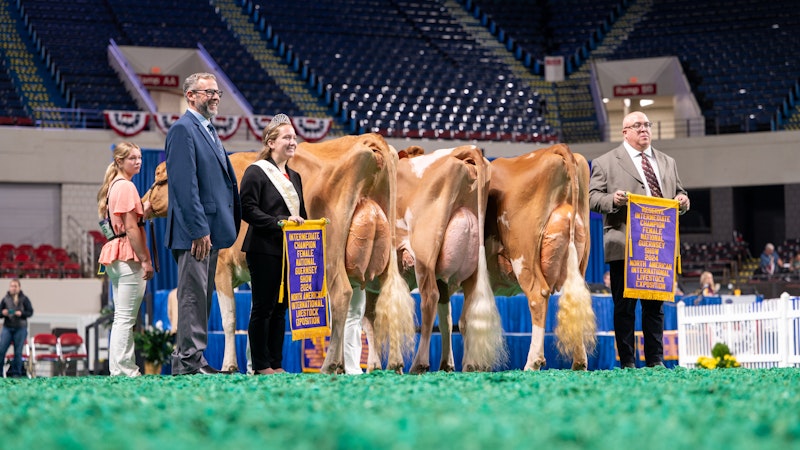The North American International Livestock Exposition has a long history of leaders who have taken the show to new heights while still honoring its tradition and heritage. Corinne Fetter is no stranger to NAILE. She worked with the show from 2000-2015 as a Kentucky Venues employee and is back as the Director of Expositions. Corinne has been instrumental in making sure the show is successful. We sat down with her to learn more about that journey.
Q: What is your history with the North American?
A: Believe it or not, this is my 50th North American International Livestock Exposition. I attended the very first North American as a five year old child as a young girl, and I arrived late at night with my mother who was pushing a tandem stroller with my three year old sister and my infant brother later. My sister's name is Evie and my infant brother, Keith, and we had just arrived, and we were in the pavilion and there were cattle everywhere. I was mesmerized by a giant Charolais bull, and I looked up and my mom was gone and I was lost and it seemed like hours, but within minutes two very roly poly boys came running, and it was my older brother Chan and a guy named Little Charlie Boyd. And today, Charlie serves as the chairman of the Beef Advisory Committee.
Q: What is important for the future of the show?
A: We owe a debt of gratitude to the men and women who were here originally, who were the visionaries that built this show. And we are so blessed to have a few of those people, many people, that are still with us. We certainly have already lost some of those people, but as people that are still here today, it is our mission, it is our desire to make sure that we preserve the integrity of the show. We continue to grow the show and make it sustainable for the future so that we can continue to impact young people for decades to come.
Q: How important is integrity to the North American?
A: It's everything. The men and women who bring their families, who invest in the livestock, who take the time to come, if they're not coming to a show that has integrity, it's not worth their time. And as we know in this culture, there are no secrets anymore, and it's just a matter of time when things come out in the open. It's our job to put service above self. It's our job to maintain integrity of the show and to make sure there's an equal playing field, so we can continue trying to produce the highest quality livestock. Whatever the species is. And even more importantly, develop young people with integrity. So that they can become the moms and dads, that can keep our culture more civilized and have humility in doing so. Those were the values of some of the men that started this and it has carried it to the growth that it is today.
Q: What’s at the heart of the North American International Livestock Exposition?
A: It's people coming together who've worked really hard taking care of their animals, and they get to come and compete. They get to market their livestock and their genetics. They get to educate their children about what agriculture means and to meet families and to interact with people. In today's culture, so many people live in such a digital world and people have lost the ability, in many cases, to interact face to face with people. And at the end of the day, it's about relationships. Everything we do is about relationships, and this is an environment where people can come and maintain those friendships and those relationships and build a future that's better for everyone in this country.
The North American grew and grew and grew. It added the international component to its name, recognizing its future and also what it brought with it.
14:39 – 15:54 What is the significance of the Saddle & Sirloin Club Portrait Gallery?
A: It's to preserve the portrait collection, which is over a hundred years old. There's over 350 portraits in the collection. It's men and women who have been leaders in this industry. This collection is believed to be the largest collection of its kind dedicated to a single industry. Coincidentally, it's housed here at the Kentucky Exposition Center, and it's our mission to preserve those portraits, to protect those and to showcase those so that young people can understand and learn about this industry and the impact that it has on everyone's life. That component is vital to where we've gone in our future ahead.
















